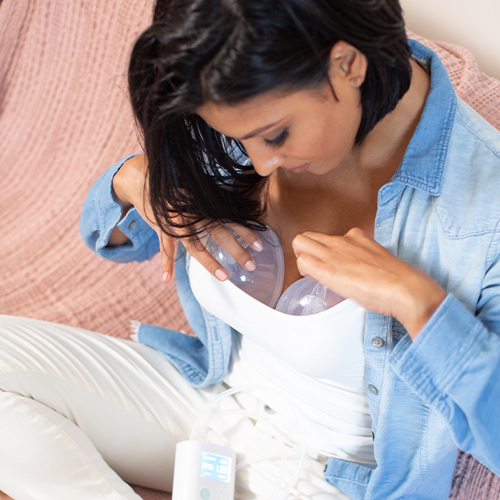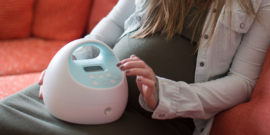Should I Introduce A Pacifier to My Baby?
Melissa Portunato MPH, IBCLC, RLC
Babies are born with a strong innate sucking reflex necessary for survival. When combined with the rooting reflex, a newborn baby can find the breast, suck and swallow milk. Sucking can also bring soothing comfort to a newborn baby, and parents often run to a binkie for a quick fix. Read on to learn the pros, cons, and helpful tips about introducing a pacifier to your breastfed baby.
When Can I Introduce a Pacifier?
All major baby experts agree parents should wait to introduce a pacifier until breastfeeding has been well established. Baby should have gained back their birth weight and be gaining weight appropriately (around 3-4 weeks). Avoid supplementing with a pacifier if baby is hungry. Limiting the pacifier for naptime and bedtime is best. After the initial first weeks, a pacifier can be considered and has some evidence-based benefits too!
Which Type of Pacifier is Best?
Pacifiers were created to mimic a breastfeeding mother’s nipple and first debuted in the early 1900s. Originally they were mostly made from natural rubber, later latex, and most recently BPA-free silicone.
Choosing a pacifier with a rounded tip better encourages nursing at the breast. In addition, the silicone material is soft and smooth, which resembles a mother’s nipple. If baby doesn’t seem interested in the pacifier offered, you can try a different one to discover the baby’s preference.
Pros & Cons
✔ In the first 6 months, decreased risk of Sudden Infant Death Syndrom when given at the onset of sleep
✔ Suck training and shorter hospital stays for premature infants.
✔ A distraction for car rides and airplane travel, especially during take-off.
✔ Pain management for minor procedures.
✔ Provides comfort if the mother is not nearby to nurse. It should not replace a feeding but rather temporarily soothe a fussy baby.
✖ Early pacifier introduction has been linked to a shorter duration of breastfeeding, sore nipples, and engorgement.
✖ Prolonged use can increase the risk of ear infections and thrush.
✖ Pacifier use is associated with poor dental development if continued after 2 years old.
✖ Overuse and prolonged use may interfere with language development.
✖ It can be tough to break the pacifier habit, and weaning can be difficult. It’s recommended to ditch the paci before baby’s first birthday.
Helpful Binkie Tips
★ Clean often and sanitize pacifiers daily
★ Replace if torn or broken
★ Wean baby before one year
★ Limit to bedtime and naptime
★ Never use a pacifier with a clip or strap, which can pose a hazard
★ If baby is happy and content no need to introduce a paci
★ Don’t push pacifier back in if baby refuses
More to Consider
Interaction with your baby is vital for language and social development. Your baby will be less likely to coo or try to communicate while sucking on a pacifier. Moderation is key. Many breastfeeding families temporarily introduce a pacifier and continue to meet their breastfeeding goals.
For guidance and support anytime, connect with a Spectra IBCLC at ibclc@spectrababyusa.com.
Sexton, S., & Natale, R. (2009, April 15). Risks and benefits of pacifiers. American Family Physician. Retrieved June 27, 2022, from https://www.aafp.org/pubs/afp/issues/2009/0415/p681.html#:~:text=Early%20breast%20weaning-,AAP%20recommends%20pacifier%20use%20in%20infants%20up%20to%20six%20months,procedures%20in%20the%20emergency%20department.&text=AAP%20suggests%20offering%20pacifiers%20to,reduce%20the%20risk%20of%20SIDS.




